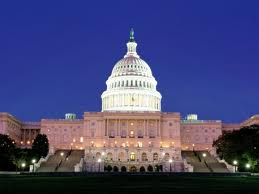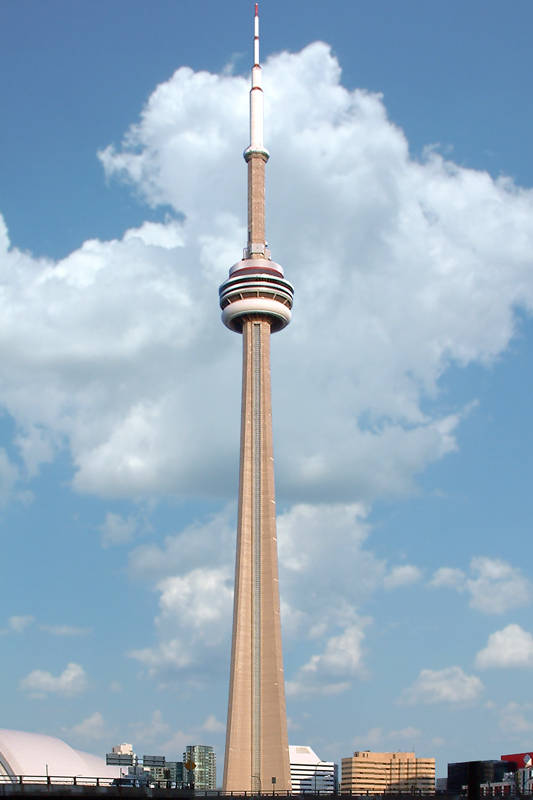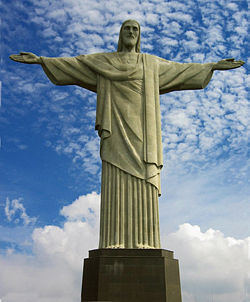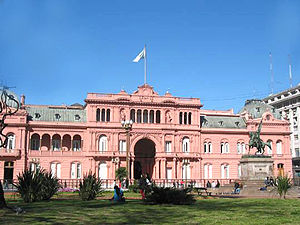

"Liberty Enlightening the World", which is also called "Statue of Liberty", is one of the symbols of New York and the United States. It is placed at the entrance of the harbour on Hudson. This harbour is placed on Liberty Island. Now, the statue welcomes whoever comes to the United States. Once, it instead welcomed whoever came looking for a better lifestyle. It was designed by two French architects: Auguste Bartholdi and Gustave Eiffel. It was sculpted between 1880 and 1886. It is made of iron, but its basement is made of greyish-pink Sardinian granite. The statue is 93 metres high, totally. It represents a woman that wears a long toga. She holds a torch containing eternal fire. This fire symbolizes freedom itself. The woman also wears a seven-tipped crown. Each tip symbolizes a continent and one of the Seven Seas. Near the feet of this woman, are broken chains. They symbolize freedom, too.

The White House is the official residence and the main office of American presidents. It is placed in Pennsylvania Avenue in Washington D.C. and is characterized by a palace, whose fašade is Neoclassical and white. This building was designed by the architects James Hoban and Benjamin Latrobe. The latter added the Northern and the Southern gates, and also the Eastern and Western wings. The White House was completed in 1800. The plant of the building is parallelepiped. The fašade of the building is divided into two storeys. Both of them have Renaissance windows. These windows are divided by Ionic pilasters, and the roof of the building is balaustrated. The Northern fašade is characterized by a high pronaos. The Southern fašade is characterized by an apse form. Inside, are decorations reminding European palaces.

CN Tower is one of the most important buildings in Toronto. It was erected between 1973 and 1976. It is totally 1000 metres high. The building is made of reinforced concrete and symbolizes Canada as a powerful country. CN Tower is placed between Union Station, Rogers Centre, and Air Canada Centre. Glass Floor offers a panoramic view that allows to see Lake Ontario, Detroit, and even Hudson Bay.

The Pyramid of the Sun is one of the most important archaeological finds in Mexico. It stood in an Aztec city called Teotihuacan, which was the capital city of the Aztec Empire. According to a legend, this pyramid was erected on the site where the Sun had been created. Once, the Pyramid of the Moon was placed near it. However, it stood at the top of the Avenue of Death and emulated a mountain because of its shape. The Pyramid was erected in 100 AD and is 246 feet high. On its top, this Pyramid has Adosada platform, which was added in the third century. Later, lime plaster was added to the fašade of the Pyramid. Once, there were motiffs representing jaguar paws, stars, and snake rattles. The current version is the result of the excavation begun in 1910. This excavation is still happening.

The "Cristo Redentor" is a statue representing Jesus Christ placed on Corcovado Mountain, not far from Rio de Janeiro. This statue represents Jesus redeeming humanity and rising over Rio de Janeiro and its bay. Jesus opens his arms as if he embraced someone. The statue is 30 metres high, and its basement is 8 metres high. Although its original project dated back to 1850, nevertheless its definitive version was designed by the French sculptor Paul Landowski and sculpted between 1921 and 1936. Its crossed shape reminds the death of Jesus himself. Concrete is the most used material because it is good to create cross-shaped buildings and statues. Under the statue, is a chapel. It was consecrated by archbishop Eusebio Oscar Scheid in 2009. The statue can be reached from Rio de Janeiro by 3 panoramic elevators, 8 escalators, and a rail network.

Casa Rosada is one of the most important monuments in Buenos Aires and views the famous Plaza de Mayo. It is the sight of the President's office. Inside, is also the "Museo de la Casa de Gobierno", an exposition of objects belonged to Argentinian presidents. The Casa Rosada was erected on the ruins of Don Juan Baltazar d'Austria's stronghold in 1594. A more modern version is the one erected in 1810. At that time, Argentina became an independent republic. The current version was erected in 1898. The fašade of the building is mainly Neoclassic, but there are also influences from the other styles. An arch allows the entry to the building. The colour of the fašade symbolizes peace between Unitarians and Federalists after their civil war. The gate placed on Calle Rivadavia leads to the Hall of the Busts, the Patio de las Palmeras(Palm Courtyard), and the Sal˛n Blanco (White Hall).